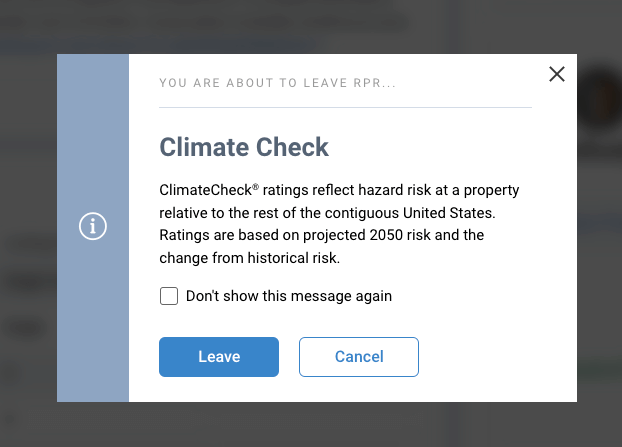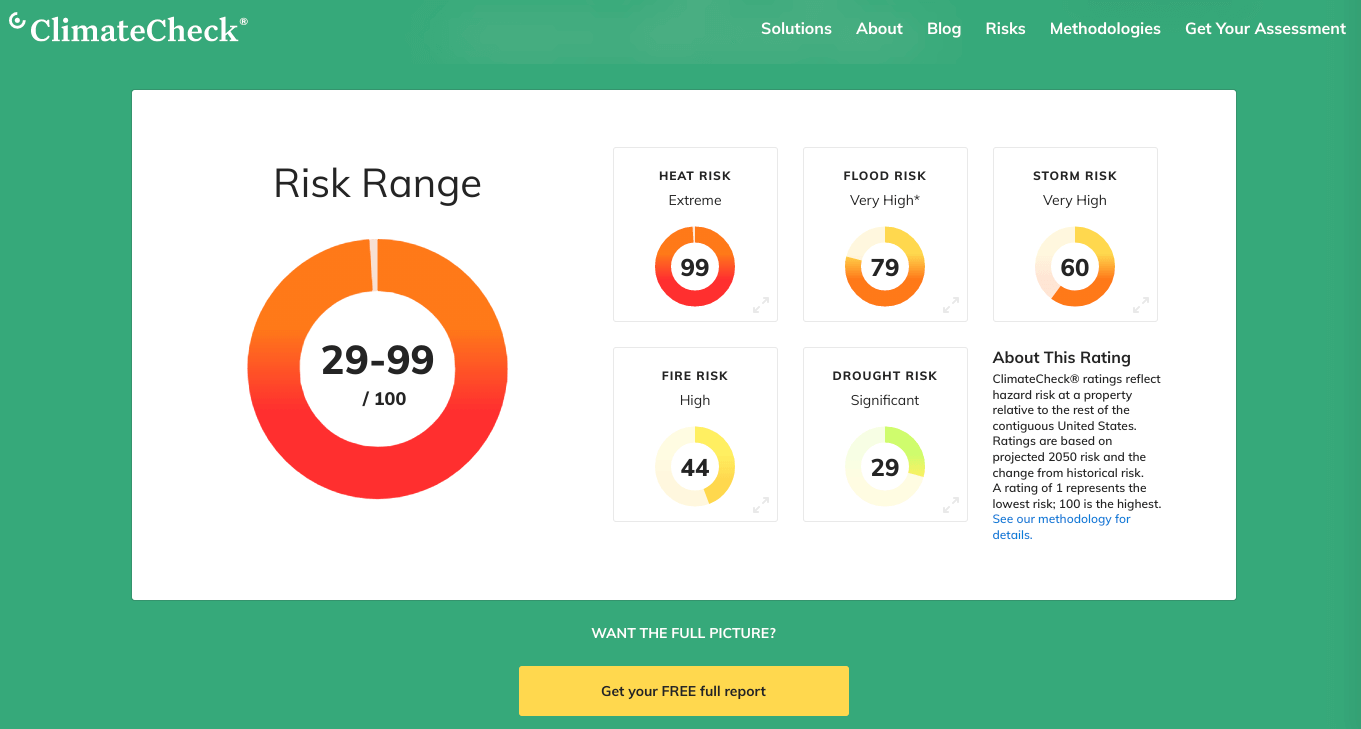What is ClimateCheck®?
ClimateCheck®
RPR has partnered with ClimateCheck® to offer a resource that determines a property’s future risk of climate change-related hazards. ClimateCheck® rates a property’s future risk of climate change-related hazards and assigns a rating from 1 to 100, with 100 representing the highest risk. By future, they mean the year 2050 — a period within the lifespan of a 30-year mortgage signed today.
Property Details
The ClimateCheck® link is located in the “Additional Resources” section of any Property Details page. Click the Connect button, then select Leave in the pop-up box, to acknowledge that you are opening the ClimateCheck website in a new browser tab.


Climate Risk Snapshot
Ratings are displayed in a snapshot of the five hazards rated; Heat, Flood, Storm, Drought, and Fire. Each hazard is assigned a rating from 1 to 100, with 100 representing the highest risk.
ClimateCheck® offers a free report on their website that you can email or print to share with your clients. The report contains ideas that the property owner can do to improve the property and prepare against the risks. Select the button under the snapshot to have a report emailed to you within minutes.

Risk Range
The Risk Range is simply the lowest rating of the five hazards and the highest rating of the five hazards.

Risk Rating Information
ClimateCheck® rates a property’s future risk of climate change-related hazards and assigns a rating from 1 to 100, with 100 representing the highest risk.
Click on the links below for more information
Frequently Asked Questions
Need Help?
If you need additional assistance, contact RPR Member Support at (877) 977-7576 or open a Live Chat from any page of the website.
